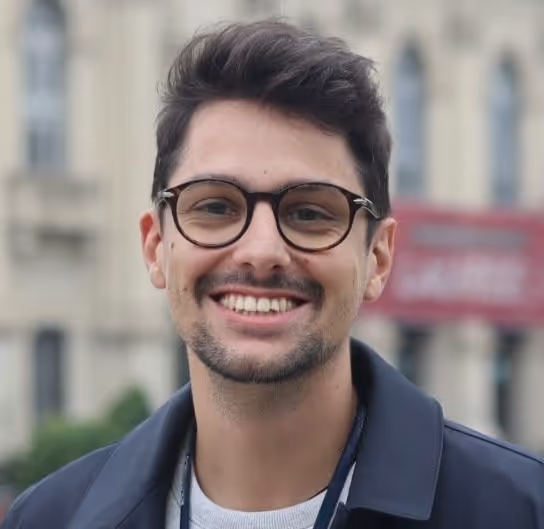
Davide Salvi
Research Scientist
How did you first become interested in Multimedia Forensics?
My interest in Multimedia Forensics began during my PhD, where I focused on signal processing and deep learning techniques to detect speech deepfakes. What I find interesting and exciting about this field is that it’s an ever-evolving landscape that requires continuous innovation to stay ahead. Additionally, I find it fascinating to have the opportunity to develop technology that safeguards society by preventing the malicious use of synthetic media.
What are you currently working on, and why is it important?
I’m currently working on detecting speech deepfakes. This area is becoming increasingly critical, as the number of cases related to the misuse of synthetic speech has exponentially increased in recent years, posing serious threats ranging from misinformation to fraud. It is now crucial to develop reliable detection methods to counteract these risks and help prevent the malicious use of such media.
What are the three most important things a non-technical audience should know about your research?
First, deepfakes are becoming increasingly realistic and easy to create. My research focuses on detecting synthetic speech, or fake audio generated to mimic real voices. With recent advances in AI, creating this kind of audio has become easier than ever, with results that are extremely convincing, raising serious concerns about privacy, security, and public trust. Nowadays, we can’t trust everything we see (or hear) online. But my research helps raise awareness that even familiar voices can be faked, reinforcing the need for critical thinking when navigating the web.
We’re building tools to protect individuals and society at large. My work focuses on developing detection systems that identify synthetic speech. These tools are designed to support individual users, as well as journalists, platforms, and others, in identifying deepfakes and preventing their misuse.
How could your work change the way people interact with digital media?
My work helps raise awareness that not everything we see or hear online can be taken at face value. By understanding that deepfakes exist and can be highly deceptive, people will become more critical and cautious consumers of digital content. This skeptical engagement is essential to reducing the impact of misinformation and manipulation.
How do you approach problems that seem unsolvable?
When I encounter a problem that feels unsolvable, I break it down into smaller, more manageable parts. Tackling each piece individually allows me to make steady progress. In the end, solving several “easier” sub-problems is often far more effective and less overwhelming than attempting to tackle one huge challenge all at once.
What do you do outside of research? Any surprising hobbies or passions?
I’m a musician. I have a music degree in mandolin and have been playing it for over 15 years. It’s a big part of my life and a great creative balance to my technical work. I’m also a soccer fan and proudly support Atalanta, the team from my hometown, Bergamo.
What excites you most about the future of your field? How do you see this field evolving in the next five or ten years?
The fields of deepfake creation and detection are evolving at an incredibly fast pace, making long-term predictions challenging. What excites me most is the constant need for innovation and development. In the coming years, synthetic media will become even more widespread across digital platforms, whether used maliciously or creatively. Users will be increasingly exposed to synthetic data, and it will become increasingly important to develop reliable methods to verify the origin and authenticity of such media to protect against its misuse.
What excites you most about GetReal’s future?
What excites me most is the incredible team, which is full of smart, driven, and passionate people striving toward a well-defined company vision. I truly believe we’re in a great position to tackle the complex challenges ahead, and I’m confident that we’ll find innovative solutions to all the incoming challenges we will need to solve in the future.
